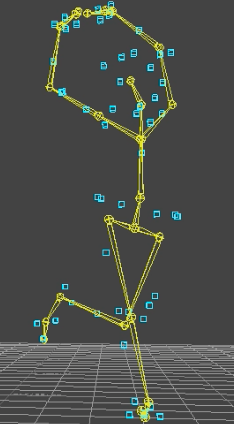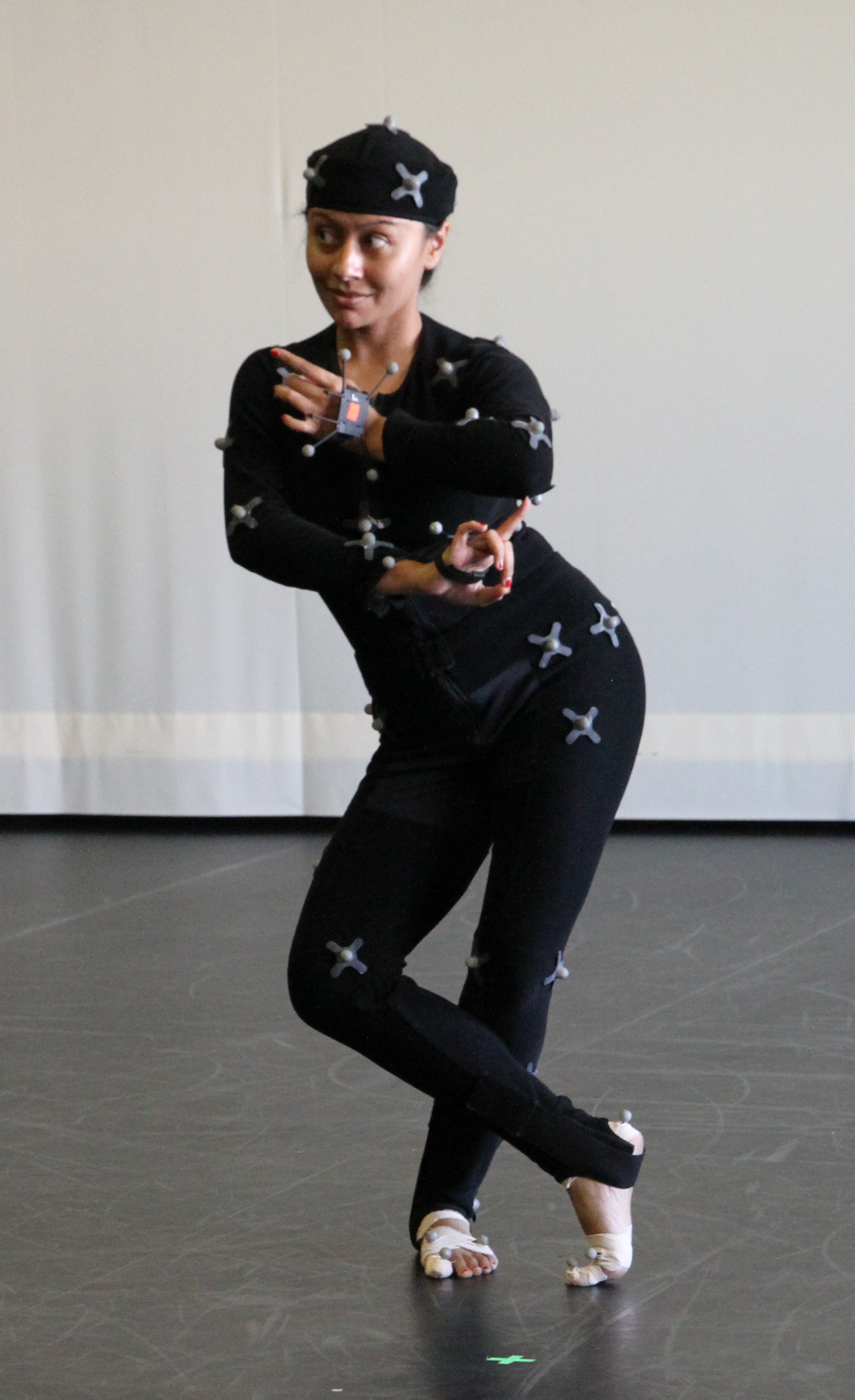Odissi Across Media | 1 | 2 | 3 | 4 |
In making and analyzing these mediated renditions, I complicate a simplistic understanding of the Odissi body as historical and motion capture technology as contemporary, given the complex development of Odissi in the middle of the twentieth century retrospectively attributing itself a 2,000-year-old history for political and nationalist ideals (Banerji, 2012). Without necessarily foregrounding the temporal disjuncture based on a linear understanding of time between ancient movement and progressive technology, I foreground the varying ways in which movement influences the digital environment through modes of shaping bodies, costuming, and spatial design. My dancing body weaved within historical sculpture, contemporary performance, and technological mediation in videos is further centered in Erin's webtext as accessing embodiment through narrative gesturing.



Odissi dance, originating from the eastern Indian state of Odisha, has been retrospectively constructed in postcolonial India as a 2,000-year-old tradition historically practiced by female temple-dancers (Maharis) and young boys dressed as girls (Gotipuas) (Kothari, 1990; Patnaik, 1990; Vatsyayan, 1967). It was first mentioned in Bharata's Natyasastra, the oldest performing arts treatise, written around 200 BCE. Archaeological evidence of dancing figures from caves in Odisha show that it is the oldest of all the classical dance forms of India (Ragini, 2002). Inscriptional evidence in the Odishan Hindu temples, such as the Brahmeswar temple, proves the presence of dancing inside the temples. While Odissi dance has continued from the Natyasastric era to the contemporary context, the Maharis themselves have ceased to exist. Their millennia-long tradition ended with the death of Sashimoni Devi, the last surviving Mahari, on 19 March 2015. Gotipuas continue to exist alongside Odissi in the contemporary proscenium theatre, folk festivals, art exhibitions, and international performance venues.
As cultural revivalists, dance teachers, historians, and aestheticians reconstructed Odissi in the 1950s, significant research went into the inter-modal synthesis of the dance form from heterogeneous movement traditions, along with multiple media and their associated technologies (Mohanty, 2007; Pathy, 2007; Patnaik, 1990). During its inception, the dance found resonance with temple sculpture, Mahari ritual, Gotipua dancing, palm-leaf painting, and written treatises such as the Natyasastra, Abhinaya Darpana, and Abhinaya Chandrika. While tracing the history of Odissi, scholar Anurima Banerji (2012) showed the centrality of material culture. Thus, Odissi has always been practiced in multimodality where its postural and gestural significance lies in its ability to express narrative and metaphor. This maneuver is in conjunction with the larger theme of multimodal narrative across media in this collaboration combining traditional dance practice and computational technology. Nevertheless, its esoteric access to Hindu spiritual theosophy ensures that textual emphasis supersedes all other influences, leading to the dance's cultural elevation from a temple practice into a classical form. The textualized body became the tradition’s primary focus, drawing attention away from the moving body itself, and away from the marginalized bodies of women and children that were once the dance form's primary practitioners.